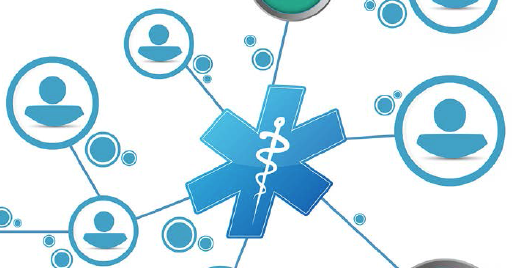 Patient and community outreach have changed over the last decade. Patient organizations and pharmaceutical companies have been building communities, especially online communities of patients, because they recognize the opportunity to provide support and information exchange.
Patient and community outreach have changed over the last decade. Patient organizations and pharmaceutical companies have been building communities, especially online communities of patients, because they recognize the opportunity to provide support and information exchange.
Social media has had a huge impact on patient communities. Patients use the Internet and social media as a way to reach out to each other and educate themselves about their illnesses and the therapeutic options available.
The first patient communities were typically developed for patients to ask questions of each other that they were unable to have answered by the clinical system, says Martin Coulter, CEO of PatientsLikeMe.
“The first population on PatientsLikeMe was the ALS community," he says. “There was a need for patients diagnosed with ALS to understand how to best manage living with the condition," he says. “This involved everything from how to brush your teeth, to how to manage in a wheelchair, to the different treatment options that need to be considered, etc. PatientsLikeMe and other communities sprung up because there was this desire for people to learn from each other."
Over time, Mr. Coulter says, these communities evolved to create an understanding of the clinical experience from the patient perspective by generating and measuring data that weren’t necessarily captured in any clinical system. This, he says, all was happening as the market began to focus on value-based care and the need to measure and understand the end-user value of care and treatments.
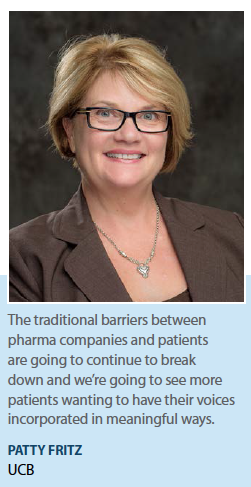 “Over the last five years, we’ve witnessed a developing need among all parties for accountability to value, especially for pharma, device, and diagnostic companies," Mr. Coulter says. “There is a growing interest in understanding the needs of those we serve in healthcare and to better capture and measure the patient journey from wellness through sickness and the impact of interventions. Patient communities such as PatientsLikeMe and others allow us to get a view of the patient experience that is not captured in traditional clinical data sets, and provides insights that can inform those engaged across the development and care delivery continuum."
“Over the last five years, we’ve witnessed a developing need among all parties for accountability to value, especially for pharma, device, and diagnostic companies," Mr. Coulter says. “There is a growing interest in understanding the needs of those we serve in healthcare and to better capture and measure the patient journey from wellness through sickness and the impact of interventions. Patient communities such as PatientsLikeMe and others allow us to get a view of the patient experience that is not captured in traditional clinical data sets, and provides insights that can inform those engaged across the development and care delivery continuum."
There is now more interest from the pharma industry in trying to understand patient perspectives on an array of things, says Brian Loew, CEO at Inspire.
“Today, we do work that includes patient insights and understanding how and what influences patients to make decisions that affect their health and the way that dollars are spent," he says.
Patient communities, however, are multidirectional. Just as pharmaceutical companies hope to get closer to the patient, patients want to communicate with providers, including pharmaceutical companies.
Patients now also expect that industry will be communicating with them via electronic media as well, says Jayne Gershkowitz, chief patient advocate, Amicus Therapeutics.
“People are becoming more educated healthcare consumers," she says. “The more patients know, the more engaged they are. I’ve already seen that difference since 2007 when I initiated our patient advisory boards at Amicus. That mirrors the trend in our country. We will continue to see more input from patients and patient communities as the industry embraces the need for the patient perspective in drug development."
This two-way conversation, however, is not happening as consistently as it should, Mr. Loew says. He points out that information that flows from pharma to patient is often one-way and educational.
“Patients don’t want to be treated like children," he says. “For example, people visiting our breast cancer community immediately get the feeling that these women have become researchers. They’re learning, and learning more, about their disease. The same thing is true in our rare disease communities, where people become experts. These patients have a huge body of knowledge, and oftentimes they look at the information that comes from pharma companies — the patient education materials, which are all written at one level — and it’s often very difficult for them to go deeper. Many patients are thirsty for more information and more opportunities for discussion."
Patient advocacy organizations are more sophisticated than they once were, says Scott Schliebner, VP, scientific affairs, rare diseases, at PRA Health Sciences.
“New rare diseases are being identified every day, and new communities are emerging around these new diseases," he says. “Some are large multinational nonprofit advocacy organizations and some are smaller community groups started by a parent to bring awareness or to raise funding for the disease."
On the clinical development side, social media has been helpful in trying to incorporate the patient perspective and the patient voice, Mr. Schliebner says.
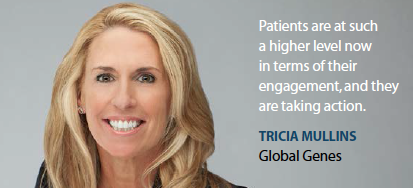 “We don’t want to have clinical trials designed in a vacuum, cross our fingers and hope that patients will enroll," he says. “We want to bring patients and families into the process, hear what’s important to them, and incorporate their input into the study design."
“We don’t want to have clinical trials designed in a vacuum, cross our fingers and hope that patients will enroll," he says. “We want to bring patients and families into the process, hear what’s important to them, and incorporate their input into the study design."
Tricia Mullins, VP, strategic alliances, Global Genes, says patient groups, even the smaller ones, have become highly skilled organizations.
“Technology and social media have helped organizations get the word out about their missions," she says. “Patient communities are operating at a higher level of engagement and they want to do more for their patients and they are taking action."
Ms. Mullins adds that social media has become a touchpoint for patients, especially rare disease patients, because so many of them may feel isolated and alone. Adding to the isolation, is frustration. On average, she says, rare disease patients go through eight specialists and are misdiagnosed three times before they receive an accurate diagnosis.
Pharma’s Online Communities
UCB is among the pharma companies that have created online communities for patients to coordinate with patient subgroups. As part of its commitment to patients and to further the understanding of severe diseases, UCB supports a number of programs for patients and their families. These varied initiatives include advocate programs, informative websites, social communities, and a scholarship program.
“Initially, when we built our online patient communities, there wasn’t an open commenting function," says Patty Fritz, head of corporate affairs at UCB.
“We have since enabled this opportunity for patients, which was a big step. What that does, though, is it enables the members on the community to have an open dialogue and talk about what matters most to them."
“Today, we live in a very connected society, and people who are diagnosed with a severe, chronic disease want to understand more," Ms. Fritz continues. “People are empowered to be engaged in their care, and we’ve seen a significant growth in our online communities and an increase in dialogue on those communities."
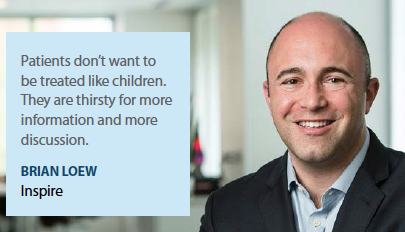 In 2006, the company created the Epilepsy Advocate program, which was developed to provide a community where people with epilepsy and their loved ones can learn more about the disease and how to manage the condition. It is an unbranded community site that currently has more than 200,000 members and provides mechanisms for patients to share stories and talk about their journey.
In 2006, the company created the Epilepsy Advocate program, which was developed to provide a community where people with epilepsy and their loved ones can learn more about the disease and how to manage the condition. It is an unbranded community site that currently has more than 200,000 members and provides mechanisms for patients to share stories and talk about their journey.
“People living with epilepsy can go a very long time, even years, without having a conversation with someone else who is living the same experience," Ms. Fritz says. “Furthermore, epilepsy is a condition that is often stigmatized."
Ms. Fritz says UCB takes great care to ensure that the content on the site is not associated with products. The company has a very rigorous review process to ensure the accuracy of the information and to make sure that it is communicated in a way that can be clearly understood by the audience. Content is often triggered by discussions among community members. One example is a discussion that came about regarding the best way to speak with physicians, so the company included information about how patients can communicate effectively during the next doctor visit.
“The Epilepsy Advocate program provides patients with an environment where they can feel as though they can have that conversation and speak to others who have lived that experience, and ask questions about what others experience and how they’ve solved the challenges of living with and living beyond their condition," Ms. Fritz continues. “This is a true community where people seek support and inspiration."
The Epilepsy Advocate program served as a format for other programs the company has created, which includes Crohn’s & Me in 2009 for people whose lives are affected by Crohn’s disease. The website has helpful educational information and tips for living with Crohn’s disease, including diet, travel ideas, videos from doctors and patients, as well as other resources. Visitors can also download a Crohn’s disease wellness tracker and the Crohn’s Advocate magazine, including the interactive iPad version of the magazine.
A third UCB community is the Parkinson’s More Than Motion, a program dedicated to portraying the full realities of living with Parkinson’s disease (PD). More Than Motion provides a glimpse into the real lives of people with PD to find out how they cope day to day, and how they aim to keep active and involved with life despite the challenges that PD can present.
Pharmaceutical companies, Ms. Mullins says, are doing more to reach patients, including adding a chief advocacy officer to the C-suite.
“Having patient advocacy on a C-level is an important element of making sure the patient’s voice is heard by the senior leadership," she says.
Patient advocacy is becoming a strategic function for many companies, according to a recent survey by BioNJ of 75 biopharmaceutical companies in New Jersey. The role of the patient advocacy professional can vary widely across companies.
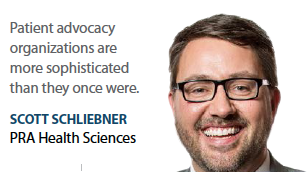 Common roles described by the survey include working with nonprofit patient advocacy groups on understanding research and raising awareness (29% of respondents) and providing funding to such organizations (14% of respondents).
Common roles described by the survey include working with nonprofit patient advocacy groups on understanding research and raising awareness (29% of respondents) and providing funding to such organizations (14% of respondents).
Ms. Gershkowitz says Amicus has a global approach to advocacy that is layered with regular communications with patient community leaders and complemented by face-to-face interactions with individual patients and caregivers at conferences and meetings. Amicus provides educational materials that help people with rare diseases advocate for themselves.
“Within these communities, particularly Facebook, people are developing their own groups and they start to attract like-minded people but there may be multiple pockets online," she says. “I believe it is still very helpful when those pockets are well coordinated as part of the broader patient community with organizations, connecting to rare disease umbrella associations and other disease umbrellas."
Working with Patient Groups
Industry leaders say patients and patient communities will continue to evolve and become even more empowered. As patients and caregivers are confronted with a dramatically changing healthcare landscape, American patient advocacy organizations are evolving the work they do for these communities. The advocacy groups would like to see their relationships with pharmaceutical companies change to keep pace, according to a 2015 report by inVentiv Health Public Relations Group.
“Patient communities represent an opportunity to connect, enable, and importantly, empower people to engage in their own care," Ms. Fritz says. “The traditional barriers between pharma companies and patients are going to continue to break down and we’re going to see more patients want to have their voice incorporated in meaningful ways."
Mr. Coulter agrees in the future, the information and insights from patient communities will be much deeper than they are now.
“We’re going to see data insights inform and influence decision making and core processes at a much deeper level than we do today," he says. “I think we’ve only started that journey. As part of a seamless and effortless system these patients and communities will generate information that is routinely shared among themselves, along with those that care for us, that regulate our treatments, that manage payment for our care, and that research and develop new interventions." (PV)


















